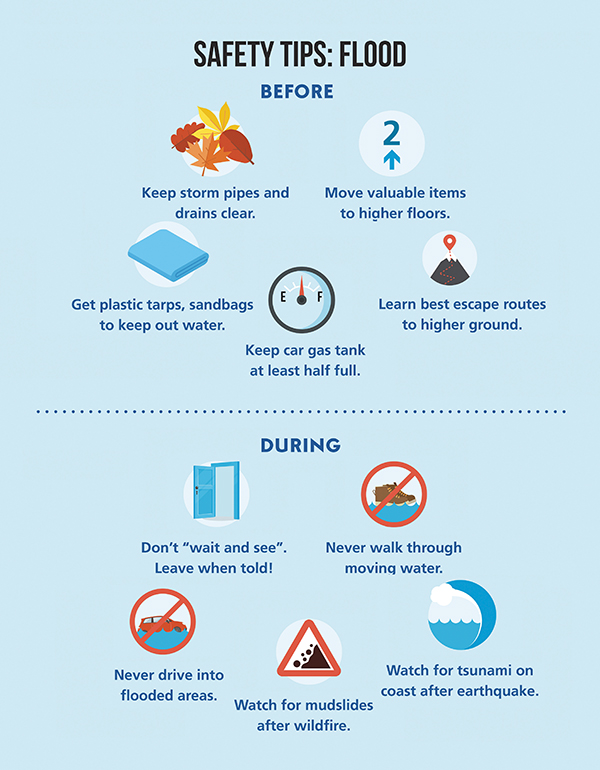Do you know what disasters we are most at risk for in Sacramento County? And how you can prepare for them? Here are five simple steps to help you get ready for a disaster. Your first step to getting ready is knowing what risks are in your area and how you can get alerts to stay informed when a disaster strikes. When emergencies hit, you will be able to get information from a number of sources – like our local TV news broadcast or on our local news radio. The second step is creating a plan to protect your people. Take a moment to think about who you want to connect with during an emergency. These people may be family, neighbors, friends, or caregivers. Write down their names and contact information, including phone numbers and email addresses. The third step is packing a “go-bag” of things you will need. Most disasters are unexpected and happen fast. Pack up those items now, such as important documents, cash, a map, medications list, phone charger, and a disaster-ready guide. Now, you and your family will have what you need when there’s an emergency and when you need to leave your home. The fourth step is building a stay box for when you can’t leave your home. Examples of things to pack would be: water, food, and trash bags. In some disasters, you may be safest staying at home. Last but not least, the fifth step is helping your friends and neighbors get ready. In large emergencies, firefighters and paramedics cannot help everyone in need right away. We must be ready to help ourselves, and those around us who might be less able to help themselves during a disaster.
Sacramento County’s greatest natural disaster is flooding. Here are five simple safety tips before a flood to keep you safe. Keep storm pipes and drains clear to prevent any water build up. Move valuable items to higher floors. Have a supply of plastic tarps and sandbags to keep water out. Always keep a car with a gas tank at least half full. Finally, learn the best escape routes to higher ground in your area. Floods can happen at any time and sometimes without warning. Here are a few more safety tips that will apply during a flood. Don’t “wait and see” and leave when you are told! Don’t drive in flooded areas; cars or other vehicles can be swept away or stall in moving water. The initial damage caused by a flood is not the only risk. Standing flood water can also spread infectious diseases, bring chemical hazards, and cause injuries.
If you would like more information or obtain a Disaster Resource Guide in another language, you can contact us at 916-393-9026!



Add a Comment